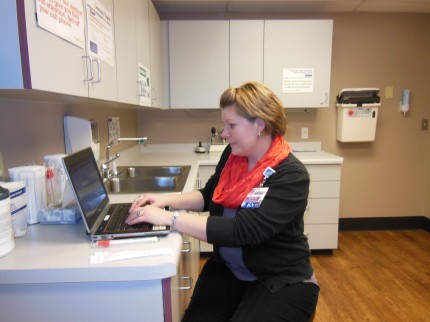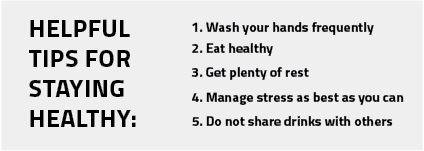Features Reporter
Photo by Christina Bauert
With midterms approaching, many college students are stressed and sleep-deprived, and are therefore more prone to illnesses.

(Upper respiratory infections have been on the rise among students, according to Registered nurse Amanda Fisk.)
According to Amanda Fisk, a registered nurse and office supervisor for both the Student Health Center and Urgent Care, there has recently been a rise in upper respiratory illnesses in students. Fisk has been a nurse for eight years and has been with the Student Health Center and Urgent Care for the past two years.
“Especially close to midterms or finals, we tend to see a rise in illness. The upper respiratory infections, such as bronchitis have gone up,” Fisk said, adding that “college students are at a higher risk because of the living environment, especially dormitories. It’s very easy to catch [illnesses].”
Matt Abbott, a mass communication student at CMU, who has a virus, experienced stomachaches, sore throat, headache, dizziness and body aches.
“All of a sudden I just got super sick,” he said.
However, students are not the only ones succumbing to illness. Daniel Flenniken, an associate professor of Mass Communication said, “The amazing thing for me was that I didn’t even feel that sick. No sore throat, just a little hoarse and tired. Whatever strain of strep this is tends to creep in unnoticed. It’s worth the time to get checked if you have been around a lot of people or in my case, a lot of keyboards.”
According to Fisk, common symptoms of upper respiratory illnesses include dry cough, fever and sore throat. With strep throat there is also nausea, vomiting and body aches. The common treatment for strep throat, bronchitis and other infections are antibiotics, such as Amoxicillin or Augmentin.
Fisk advises people to monitor their symptoms for 24 to 48 hours, but if the sore throat gets worse and new symptoms appear, to go see a doctor.
“If things are starting to head south, just come in,” she said.
Fisk explained the difference between the strep throat and an ordinary cold. While the common cold is a virus not treatable by antibiotics, strep throat is much more serious. The symptoms are more severe, such as white puss pockets forming on the back of the throat.
“There is a quick test for strep throat. It takes about five minutes, and it can tell you if you have the most common strain of strep throat,” Fisk said. “If it’s negative, we send out a second swab for culture and that takes about two days to make sure there is not something unusual growing there.”
Fisk emphasizes staying at home for at least 24 hours after starting antibiotics to prevent spreading the illness.
The Student Heatlth Center provides accessible medical care to CMU students and their dependents, such as diagnoses, treatment, injury care and follow-ups. In addition, the center also provides health education, counseling and family planning.


Recent Comments